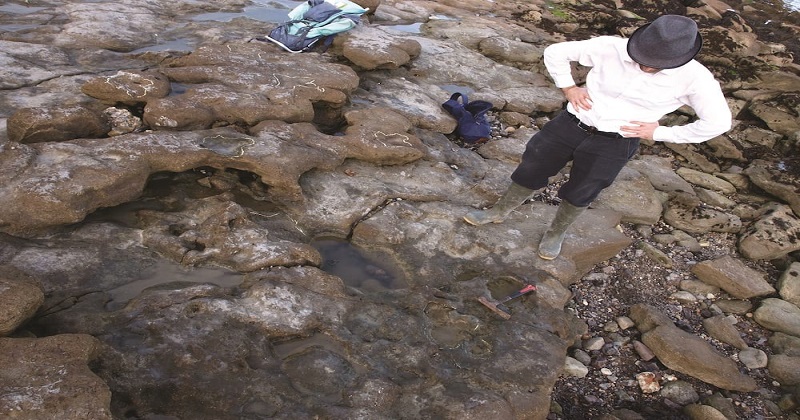
Kent: Researchers have uncovered the footprints of at least six different dinosaur species in Kent, United Kingdom, and believe that those are the very last dinosaurs to walk on UK territory, around 110 million years ago. The footprints were discovered on the cliffs and beach of Folkestone, Kent, a port town where windy circumstances are regularly releasing new fossils.
David Martill, Professor of Palaeobiology said, ‘this is the first time dinosaur footprints have been found in strata known as the ‘Folkestone Formation’ and it’s quite an extraordinary discovery because these dinosaurs would have been the last to roam in this country before becoming extinct.’
The footprints are thought to be from a variety of dinosaurs, demonstrating that there was a large diversity of dinosaurs in southern England, during the end of the Early Cretaceous period, 110 million years ago.
Philip Hadland, Collections and Engagement Curator at the Hastings Museum and Art Gallery stated that ‘back in 2011, I came across unusual impressions in the rock formation at Folkestone. They seemed to be repeating and all I could think was they might be footprints. This was at odds with what most geologists say about the rocks here, but I went looking for more footprints and as the tides revealed more by erosion, I found even better ones. More work was needed to convince the scientific community of their validity, so I teamed up with experts at the University of Portsmouth to verify what I’d found.’

The footprints are believed to belong to ankylosaurs, rugged-looking armoured dinosaurs, which were like living tanks; theropods, three-toed flesh-eating dinosaurs like the Tyrannosaurus rex; and ornithopods, plant-eating ‘bird-hipped dinosaurs so-called because of their pelvic structure being a little bit similar to birds.
The largest footprint discovered was recognised as belonging to an Iguanodon-like dinosaur, measuring 80 cm wide and 65 cm long. Plant-eating iguanodons were up to 10 metres long and moved on two legs or all fours.
The findings were also documented in a report published in the Proceedings of the Geologists’ Association, and some of the footprints are on exhibit at Folkestone Museum.

Post Your Comments